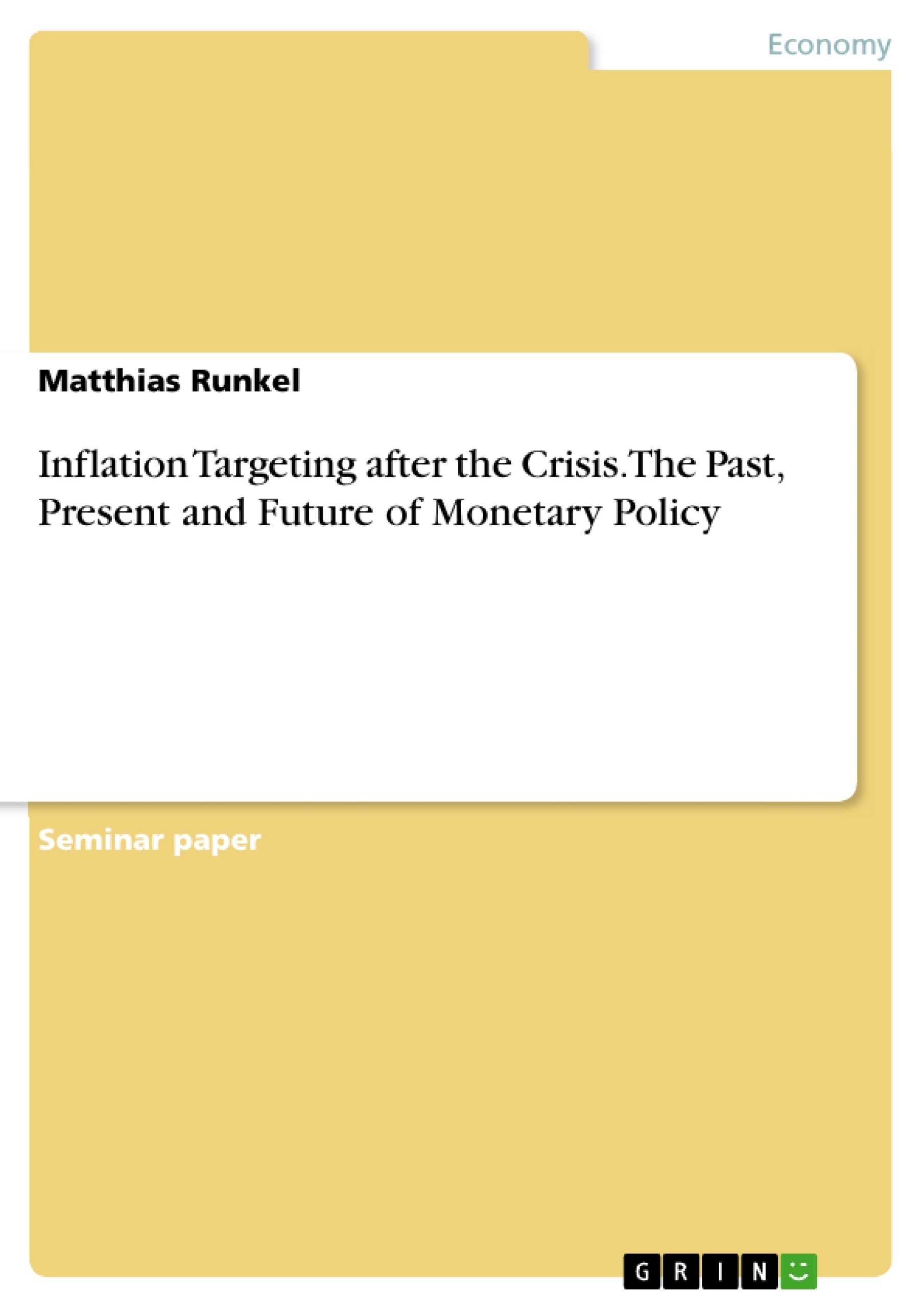For more than two decades has inflation targeting been shaping monetary policy. Inflation has successfully been brought down and stabilized. However, financial imbalances have arisen at the same time, resulting in the Great Recession that major economies are still struggling with. Monetary policy seems to have been overemphasizing price stability while underestimating the risks of financial imbalances. Even before the crisis did research point to this problem, but – as history teaches us – it does usually take events with major impact on the understanding of the economy for these to be decisively addressed. It seems legitimate to argue that the Great Recession is such an event. It is therefore of great importance to analyze possible consequences concerning monetary policy and inflation targeting in particular.
The first section gives a brief history of monetary policy that shows how it has evolved over time and how economic events initiated major changes. Section 2 presents the concept of inflation targeting and how the lessons of history have been implemented into this policy framework. Section 3 discusses the shortcomings of inflation targeting that were revealed by the Great Recession and introduces several suggestions for modification that address these shortcomings
Inhaltsverzeichnis (Table of Contents)
- Introduction
- A brief history of monetary policy
- Monetary policy today
Zielsetzung und Themenschwerpunkte (Objectives and Key Themes)
The paper analyzes the implications of the financial crisis for monetary policy and inflation targeting, specifically focusing on the potential need for modifications to the existing framework.
- Evolution of monetary policy over time, highlighting key events and their impact on understanding the economy.
- The concept of inflation targeting and its implementation based on historical lessons.
- Shortcomings of inflation targeting revealed by the Great Recession and potential modifications to address them.
- The importance of credibility, transparency, and commitment in monetary policy.
- The role of central bank independence and its impact on price stability.
Zusammenfassung der Kapitel (Chapter Summaries)
The first section provides a historical overview of monetary policy, tracing its development from the gold standard to the modern era of inflation targeting. It examines key events that shaped monetary policy, including World War I, the Great Depression, World War II, and the Bretton Woods system. This section highlights the importance of learning from past experiences and adapting monetary policy to changing economic circumstances.
The second section focuses on the current state of monetary policy, particularly the concept of inflation targeting. It discusses the framework of inflation targeting, emphasizing the importance of balancing strict rules with flexibility. The section also explores the role of central bank communications and the need for credibility and transparency in achieving inflation objectives.
Schlüsselwörter (Keywords)
Inflation targeting, monetary policy, financial crisis, Great Recession, central bank independence, credibility, transparency, commitment, price stability, economic events, historical lessons.
- Citation du texte
- Matthias Runkel (Auteur), 2012, Inflation Targeting after the Crisis. The Past, Present and Future of Monetary Policy, Munich, GRIN Verlag, https://www.grin.com/document/285239
-

-

-

-
Téléchargez vos propres textes! Gagnez de l'argent et un iPhone X. -

-
Téléchargez vos propres textes! Gagnez de l'argent et un iPhone X. -

-
Téléchargez vos propres textes! Gagnez de l'argent et un iPhone X. -

-
Téléchargez vos propres textes! Gagnez de l'argent et un iPhone X. -

-
Téléchargez vos propres textes! Gagnez de l'argent et un iPhone X.

